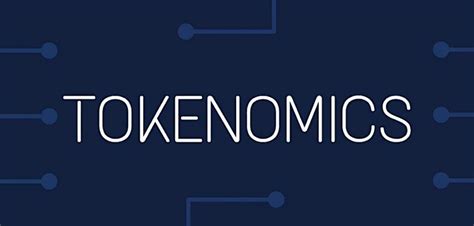The future of tokenomics: insights from Solana (sol)
Since the world continues to shift towards Decentralized Finance (Defi) and Blockchain technology, the concept of TOKENOMIK has become increasingly important to understand how cryptocurrencies are designed and built. In this article we will take a closer look at Tokenomics in the Solana network, especially from the perspective of his native cryptocurrency.
What is TOKENOMIK?
Tokenomik refers to the examination of the design and assignment of tokens within a blockchain-based system. It includes the analysis of factors such as token care, distribution, governance structures and benefits to understand how they contribute to the overall success and sustainability of a project. In the context of Defi, TOKENOMICS plays a crucial role in determining the assumption, price movement and scalability of a decentralized application (DAPP).
Solana: A growing guide in defi
Solana, one of the fastest growing blockchain platforms on the market, made headlines with its innovative approach to Defi. Solana’s focus was founded in 2017 by Daniel Wang, Justin Hazeltine and Joseph Seong and is based on the establishment of a scalable and safe platform for the creation of decentralized applications (DAPPS). With over 2 billion US dollars in his token offer, Sol is one of the most valuable cryptocurrencies on the market.
Tokenomic’s knowledge from Solana
In view of the unique approach for Defi, we can gain insights into the Solana tokenomics by examining some key factors:
- Sol Supply: The overall range of Sol -Token was limited to 150 billion with at least 60% for taking off. This strategy enables a controlled growth of the overall cost price and at the same time liquidity.
- token distribution: Solanas initial public offer (IPO) recorded a significant capital stream in the project. The majority of the SOL -TOKEN was distributed to early users, developers and institutional investors, which created a strong basis for future growth.
- Governance structure: Solanas Governance model is decentralized and community-driven. The token owners of the platform take part in the decision-making process by an electoral system that ensures the long-term sustainability of the network.
- token utility: Sol -Token were used for various purposes, such as: B. stakers, liquidity regulations and rewards for developers. This use shows that Solana’s commitment to added value for its community offers added value and at the same time promotes innovation and growth.
Effects on defi
The knowledge gained from Solanas tokenomik can be used in the Defi landscape:
- TOKEN Supply Management: Understand how the token offer of a project is effectively managed, is crucial for maintaining liquidity, reducing volatility and preventing price manipulation.
- Diversification strategies: Dapps about Solana and those on other blockchain platforms should consider diversifying their token offers in order to avoid market concentration and to ensure long-term sustainability.
- Governance models: The decentralized governance structure of Solana can serve as a model for other defi projects and promote transparency, inclusive and commitment of the community.
Diploma
Since the Defi area continues to mature, understanding the tokenomics is more critical than ever. Solana’s innovative tokenomics approach offers valuable insights into its design principles, sales strategies and governance models. By examining these factors, developers, investors and project managers can gain a deeper appreciation for the complexity of blockchain technology and make well -founded decisions about their investments.
recommendations

* Developer: consider the implementation of SOL-TOKEN in your projects to use the growing demand for Solana-based dapps.


